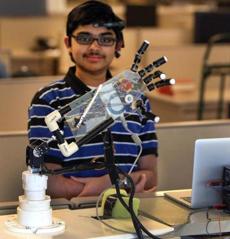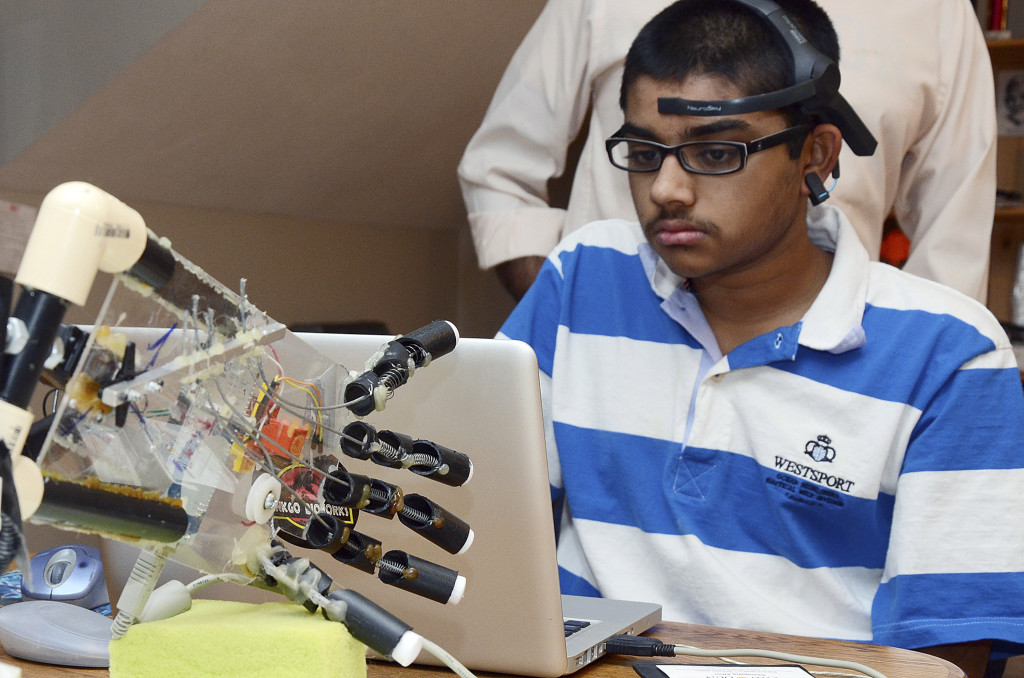At age fifteen, Shiva Nathan is already internationally recognized in the field of robotics—during last month’s Mobile World Congress, the teen won a $5,000 prize for his artificial arm, a design that uses Bluetooth to transmit signals from your brain to the hand.

Honestly, I don’t think we’re giving today’s youth enough credit
According to the Boston Globe, Nathan’s interest in prosthetics began when he learned that one of his father’s relatives in India had lost both of her forearms, and he decided “to take matters into my own hands.”
Nathan’s interest in technology was already strong—the high school sophomore has designed several iPhone apps and takes precollege electrical engineering courses at MIT. To design his artificial arm, Nathan devoured the existing literature on prosthetics in order to build the necessary components. He personally designed the mechanical arm and hand, before combining it with a microcontroller and Bluetooth radio receiver.
The arm does not respond to specific thoughts, like “wave hello” or “pick that up,” but to the separate mental states of relaxation and attention. Focusing on something specific—like a number or object—will create an attention signal, which is then transmitted via Bluetooth to the arm, causing it to move.

For now, the arm can only wave from side to side, or flex its fingers in or out—Nathan is far from being able to direct the arm to pick up a specific object or complete more complex tasks. But his design is still a huge step for robotics.
According to the Boston Globe, lead prosthetics expert John Fergason at San Antonio’s Brooke Army Medical Center, Nathan’s design could go a long way towards improving how artificial limbs use Bluetooth. Currently, that technology is simply used to install software into computerized prosthetics, but Nathan’s design could help to control those limbs in real time.
“I think that’s a pretty doggone creative way to do it,” said Fergason on the Boston Globe.
Nathan is already working on an improved version of his arm, one that will utilize Pupil, an eye-tracking technology developed by the minds at MIT, in order to control the limb at a glance. He hopes to eventually start his own prosthetics company or continue his work on Robotics at iRobot Corp. or Google Inc.
The teen is planning to donate a significant chunk of his $5,000 prize to charity, although he is keeping most of it for his college fund—“for the scholarships I don’t get,” he said.
I don't want to tell colleges how to do their jobs, but he's a fifteen year old that's just changed robotics forever. I think you can rustle up some funds for him.
Source Boston Globe
Advertisement






